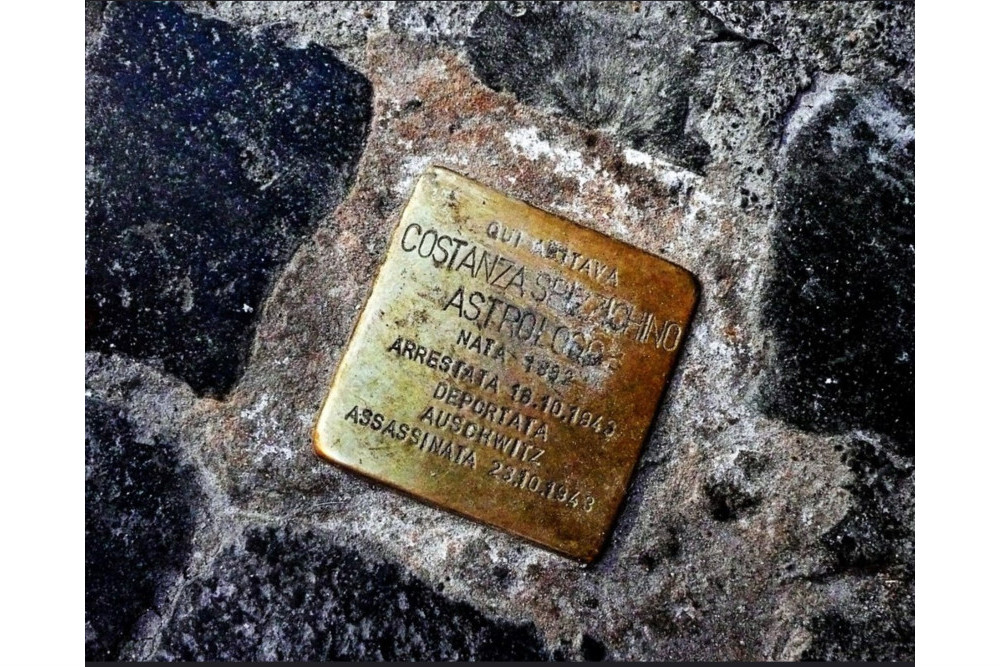Stumbling Stone Piazza Costaguti 29
This small brass memorial plaque (Stolperstein, pietra d'inciampo, or stumbling stone) commemorates:
* Costanza Spizzichino Astrologo, born 1882, arrested 16 October 1943, deported to Auschwitz, murdered 23 October 1943.
Background
In 1905, Costanza Spizzichino married Adamo Astrologo, a cultured tour guide who knew several foreign languages. Little is known about Constanza other than that she was a mother devoted to her 3 sons -- Giuseppe, Roberto, and Rodolfo. Her husband died in 1937.
In September 1943, the sons went into hiding with non-Jewish people in Rome, and Constanza went to a dear Roman friend, Augusto D’Arcangeli. But she could not stay away from her sons and tried to convince them to return home. They told her that they would return later, and she went to visit her sister in the Jewish quarter. The next morning, 16 October, the Nazis rounded up and arrested over 1000 Roman Jews, who two days later were loaded onto a train of cattle cars going to Auschwitz. Roberto telephoned the Arcangeli household to ask about his mother. To protect the boys so that they wouldn’t go outside looking for her, Augusto Arcangeli lied, saying that their mother was fine. Costanza Spizzichino Astrologo was murdered on arrival in Auschwitz on 23 October 1943.
"Stolpersteine" is an art project for Europe by Gunter Demnig to commemorate victims of National Socialism (Nazism). Stolpersteine (stumbling stones) are small, 10x10cm brass plaques placed in the pavement in front of the last voluntary residence of (mostly Jewish) victims who were murdered by the Nazis. Each plaque is engraved victim’s with the name, year of birth, and place (mostly a concentration camp) and date of death. By doing this, Gunter Demnig gives an individual memorial to each victim. One stone, one name, one person. He cites the Talmud: "A human being is forgotten only when his or her name is forgotten."
Do you have more information about this location? Inform us!
Source
- Text: Anne Palmer
- Photos: MIgracionTOtal
- Memorie d’Inciampo: Via Costaguti 29
- Combattenti Liberazione: Pietre d’Inciampo
- Stolpersteine.eu
Nearby
Museum
- Napoleonic Museum of Rome - Roma
- 1.0 km
- Museum Granatieri Di Sardegna - Rome
- 3.3 km
- Mussolini's Villa Torlonia - Roma
- 3.7 km
Point of interest
- Palazzo Venezia - Roma
- 0.5 km
- Pantheon - Roma
- 0.6 km
- Palazzo del Quirinale - Roma
- 1.1 km
Monument
- Memorial Holocaust - Rome
- 0.0 km
- Memorial Vittorio Polacco Primary School - Rome
- 0.1 km
- Memorial Settimio Calò - Rome
- 0.1 km
Cemetery
- Tomb of the Unknown Soldier - Roma
- 0.5 km
- Commonwealth War Graves Testaccio Protestant Cemetery - Roma
- 1.9 km
- Commonwealth War Cemetery Rome - Roma
- 2.1 km





